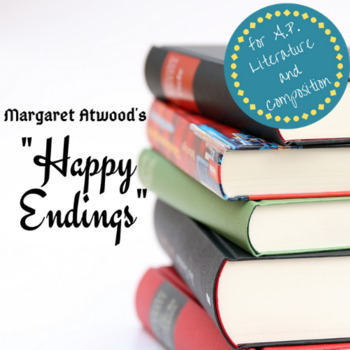

Clichés in Hollywood movies are much talked about, and a general audience quickly realizes that they have already seen certain episodes dozens of times before. For instance, it seems like there is no other option for a particular character in a particular situation. Nevertheless, it is vivid that Atwood wants to prove that these are the only plots that one may have encountered while reading numerous romantic stories. Moreover, it may seem that six plots in just one short story are too much. The author deliberately undermines the importance of characters’ decisions and makes it look like all of them are already predetermined by the situation described in the plot. The use of third-person narrative and the language Atwood chooses further distance the narrator from the characters’ lives. In Atwood’s “Happy Endings”, the narrator seems to lack any emotional connection with the characters. The characters and the plots in Atwood’s story represent only a blank canvas, which is meant to be filled not only with emotions but with experiences, decision-making, as well as phycological challenges. Atwood strongly suggests that writers and readers focus on “How and Why” alongside “a what and a what” (LLC Books 15). Thus, readers realize that apart from emotions, they are often left without any other experience or knowledge. However, she deliberately omits details, which are in charge of the emotional wave. The author provides the proper background of each character and the setting. Nevertheless, great writers who possess extensive knowledge of literary techniques (like Atwood) give readers an insight into the mass production of romantic stories meant to be popular among a general audience. The stereotypes which flood romantic stories are not sometimes vivid due to the author’s talent to describe the setting and feelings. Atwood intentionally gives all the characters in every plot the same names to show that only the initial environment and backgrounds can make a difference in a typical love story. John is a young man in B and a married man in his forties in C. For instance, Mary is just a happy married woman with a successful career in A and a pathetic young girl in B. There are several characters with the same names in the plots. Looking for academic help? Our specialists can writeĪ 100% unique paper for $13.00 $10.40/page Learn More Atwood points out that many romantic stories generally center solely around the decisions the characters make. Most characters usually act stereotypically according to their social status, age, background, and the environment. The majority of the plots of contemporary writers tend to focus on actions and their consequences. Atwood mocks writers working in the Romance genre by showing them that their stories often lack any details which do not directly describe the actions. Although all the characters have distinct backgrounds, their individuality is undermined by the way they are described in each plot. To underpin that there is just a set number of plots which writers tend to choose, Atwood simply gives them labels from A to F. The plot is divided into six stories, which are intervened, although they tell about different people. Nevertheless, the brief description of different love stories provides insight into the author’s perception of love, family, and success.

Her expertise allowed her to look at the Romance genre from a different angle and provide a sarcastic, exaggerated perception of a typical plot. Moreover, readers can only guess what the talented Canadian writer wanted to manifest. The author admits that in the beginning, she did not know what kind of story she was writing. Margaret Atwood’s “Happy Endings” represents a unique literary work, as it raises multiple issues and challenges numerous standards and writing rules in just a few paragraphs.


 0 kommentar(er)
0 kommentar(er)
